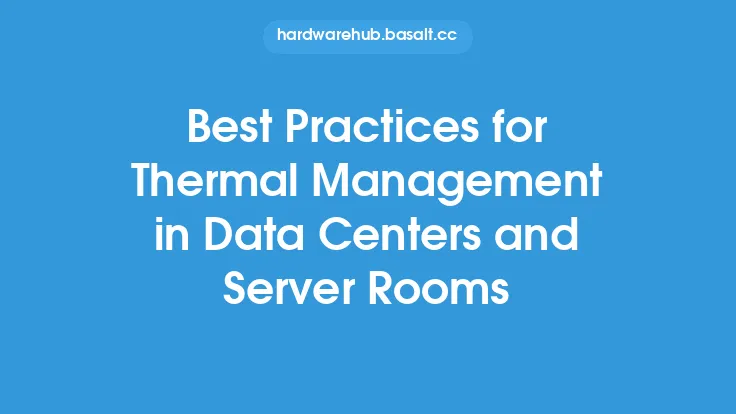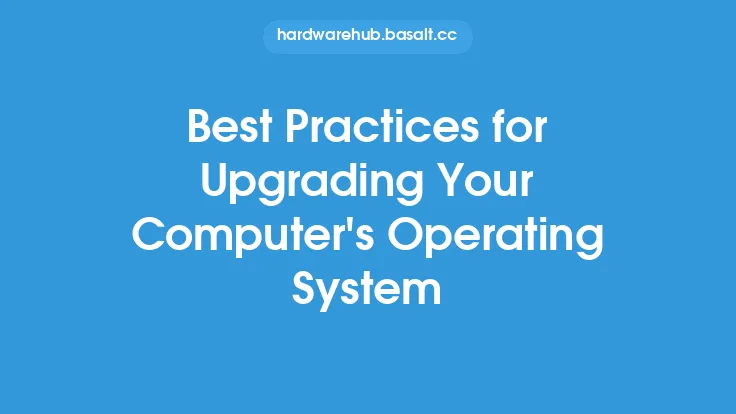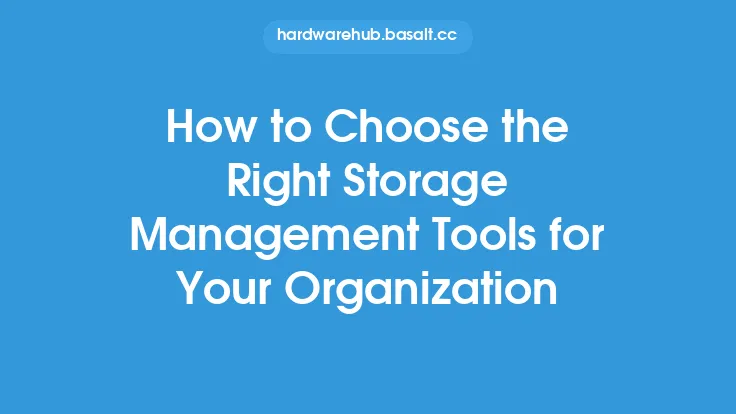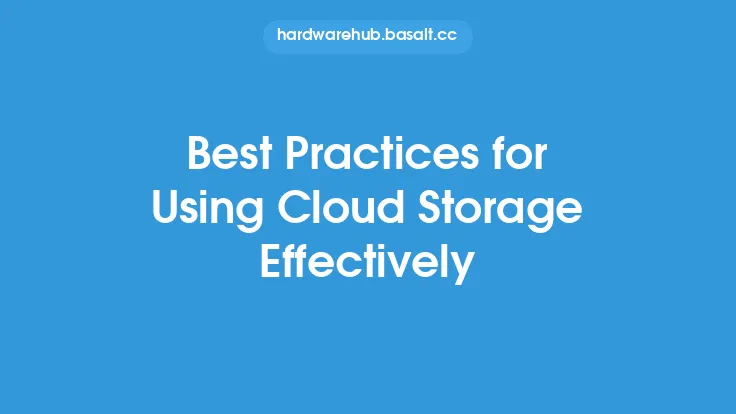Storage management is a critical aspect of maintaining a healthy and efficient computing system. It involves the process of managing and optimizing the storage resources of an organization to ensure that data is stored, retrieved, and managed effectively. Effective storage management is essential for ensuring that an organization's data is secure, accessible, and scalable. In this article, we will delve into the best practices for optimizing storage management systems, exploring the technical aspects of storage management and providing insights into the latest trends and technologies.
Introduction to Storage Management Concepts
Storage management involves a range of concepts and technologies, including storage area networks (SANs), network-attached storage (NAS), and direct-attached storage (DAS). Each of these technologies has its own strengths and weaknesses, and understanding the differences between them is crucial for effective storage management. SANs, for example, provide a dedicated network for storage devices, allowing for high-speed data transfer and centralized management. NAS, on the other hand, provides a file-level access to storage devices, making it ideal for file-sharing and collaboration. DAS, as the name suggests, involves connecting storage devices directly to a server or workstation, providing a simple and cost-effective storage solution.
Storage Management Techniques
There are several storage management techniques that can be used to optimize storage resources. One of the most effective techniques is storage virtualization, which involves abstracting physical storage devices into a virtual layer, allowing for more efficient use of storage resources. Another technique is data deduplication, which involves eliminating duplicate copies of data to reduce storage capacity requirements. Data compression is also a useful technique, as it reduces the size of data, making it easier to store and transfer. Additionally, storage tiering, which involves assigning different types of data to different storage devices based on performance and capacity requirements, can help to optimize storage resources.
Storage Management Tools and Technologies
There are a range of storage management tools and technologies available, each with its own strengths and weaknesses. Some of the most popular storage management tools include storage resource management (SRM) software, which provides a centralized platform for managing storage resources. SRM software can help to monitor storage capacity, track data usage, and identify areas for optimization. Other tools, such as storage area network (SAN) management software, provide a dedicated platform for managing SANs, allowing for more efficient use of storage resources. Additionally, cloud-based storage management tools are becoming increasingly popular, as they provide a scalable and flexible storage solution.
Best Practices for Storage Management
There are several best practices that can be followed to ensure effective storage management. One of the most important best practices is to monitor storage capacity regularly, to ensure that storage resources are not being overutilized. Another best practice is to implement a data retention policy, which outlines how long data should be kept and when it can be deleted. Additionally, implementing a backup and disaster recovery plan is essential, to ensure that data is protected in the event of a disaster. Regularly reviewing and updating storage management policies and procedures is also crucial, to ensure that they remain relevant and effective.
Storage Management and Security
Storage management and security are closely linked, as effective storage management is essential for ensuring the security of an organization's data. One of the most important security considerations is access control, which involves controlling who has access to data and storage resources. Encryption is also a critical security consideration, as it helps to protect data from unauthorized access. Additionally, implementing a secure data deletion policy is essential, to ensure that sensitive data is properly deleted and cannot be recovered. Regularly reviewing and updating storage management security policies and procedures is also crucial, to ensure that they remain relevant and effective.
Future of Storage Management
The future of storage management is likely to be shaped by a range of emerging trends and technologies, including cloud storage, artificial intelligence (AI), and the Internet of Things (IoT). Cloud storage, for example, provides a scalable and flexible storage solution, allowing organizations to store and manage large amounts of data in a cost-effective way. AI, on the other hand, has the potential to revolutionize storage management, by providing a more efficient and automated way of managing storage resources. The IoT, which involves the connection of physical devices to the internet, is also likely to have a significant impact on storage management, as it will require the storage and management of large amounts of data from a range of devices.
Conclusion
In conclusion, storage management is a critical aspect of maintaining a healthy and efficient computing system. By understanding the concepts and technologies involved in storage management, and by following best practices and using the latest tools and technologies, organizations can ensure that their storage resources are optimized and their data is secure, accessible, and scalable. As the amount of data being generated continues to grow, effective storage management will become increasingly important, and organizations that fail to prioritize storage management will risk being left behind. By staying up-to-date with the latest trends and technologies, and by continually reviewing and updating storage management policies and procedures, organizations can ensure that their storage management systems remain relevant and effective.





